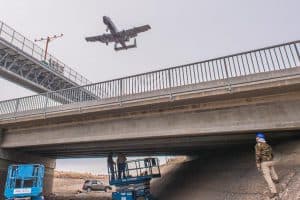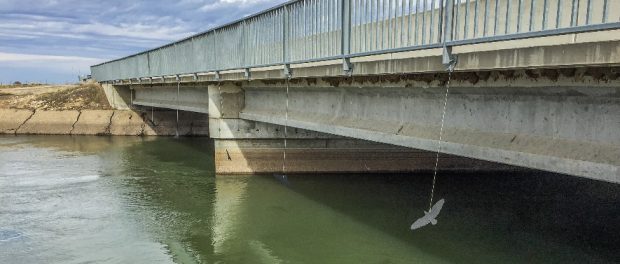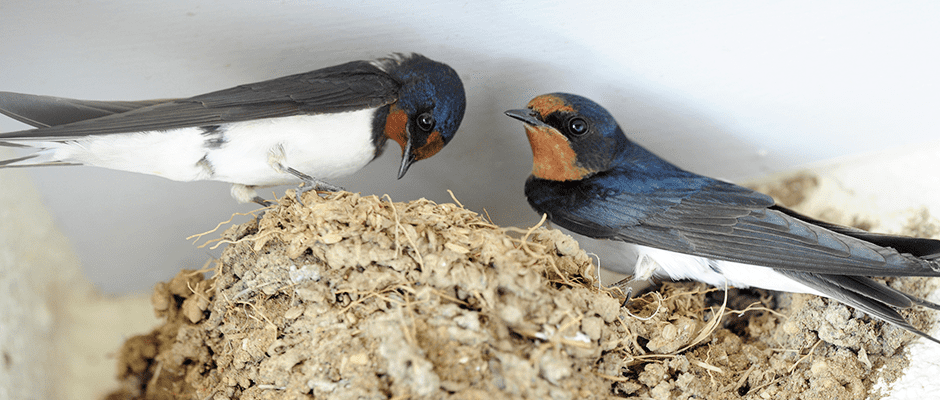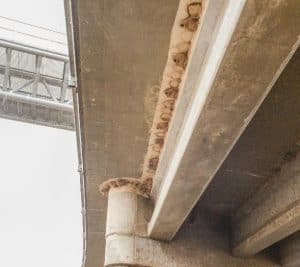Share this article
Bridge net protects jets, swallows but keeps water flowing
The U.S. Air Force’s A-10 Thunderbolt is a special military aircraft, designed for close air support of friendly ground troops, low-level quick-action against enemy ground troops, and engaging armored vehicles. When swallows weighing less than an ounce each collided with two of these 29,000-pound planes in just the wrong spot, the result was $142,000 in damage but thankfully no human injuries.

Flights of swallows nested under bridges over irrigation canals next to Gowen Field’s runway and approach lights. ©USDA Wildlife Services
Barn and cliff swallows nest in large numbers under two irrigation canal bridges near the approach runway of Gowen Field Air National Guard (ANG) base. Wildlife Services biologists in Idaho were challenged to address this continuing hazard to military and civilian aircraft by reducing attractants in proximity to the base. Among the birds most commonly struck, swallows rank low on actual damage. Eleven strikes at the Boise base over five years hadn’t caused damage, but the potential for multiple birds being struck in a single collision increases the risks.
A county highway department owns the bridges which cross an irrigation canal maintained by the Bureau of Reclamation. Both entities had to approve any solution, which the ANG agreed to fund. An initial simple solution was rejected because it would be too close to water flowing under the bridge. The highway department required a plan that wouldn’t restrict inspection of or restrict access to the bridge’s understory.

Falcon silhouettes have modified swallow behavior at an un-netted bridge but has not prevented nesting. It will be netted after the irrigation canal is emptied. ©USDA Wildlife Services
The county gave permission for embedding anchor bolts to hang the nets but required that their employees could lower them to perform their routine maintenance. Most net installations typically are permanent installations with a rigid structure, making compliance with highway department requirements unique and challenging.
After severe winter delayed the project start, a crew of five worked in February for 5.5 days. Old nests were removed and all debris was collected to avoid adding “fill” to the irrigation canal. Cable and quick clips were used to install netting taut enough to exclude the swallows, but allowing the net to be lowered for the county’s access for inspections and routine maintenance. The installed net, made of a durable UV-resistant cord in a ½-inch square pattern, will effectively keep hundreds of swallows from gaining access to the corners of the bridge’s understructure and building nests.
The weather-delayed project meant only one bridge was completed before water was released into the canal this past winter, so the second exclusion netting will be installed in the fall. In the interim, steel-plate falcon silhouettes were hung as a possible deterrent. Swallows returning in April flew more erratically than normal to avoid the “falcons” but have continued nesting on the unprotected bridge. They have not ventured into the center sections of available nest sites, making this only a partial success. No birds have attempted nesting on the netted bridge, however, suggesting the effort may prove successful.
Header Image: ©Katsura Miyamoto









